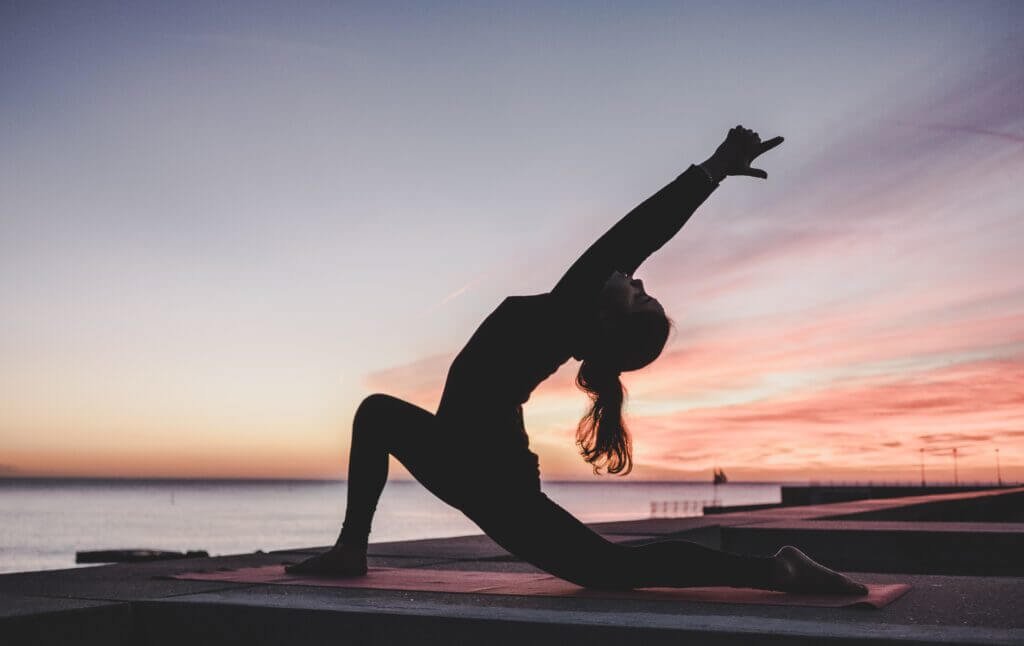Are you looking to improve your balance and incorporate balance training into your routine? Whether you’re an athlete, a fitness enthusiast, or simply someone looking to enhance your overall stability, finding effective ways to integrate balance training can make a significant difference in your workouts. In this article, we will explore some practical strategies and exercises that you can easily incorporate into your daily routine to enhance your balance and take your fitness to the next level.

Understanding Balance Training
What is balance training?
Balance training refers to the practice of improving the body’s ability to maintain stability and control during various movements and activities. It involves exercises and techniques that challenge the body’s sense of balance and proprioception, which is the awareness of the body’s position in space.
Why is balance training important?
Balance training is not only essential for athletes and dancers but also for individuals of all ages and fitness levels. It helps improve coordination, stability, and posture, which can prevent injuries and enhance overall physical performance. Additionally, balance training is crucial for older adults as it reduces the risk of falls and improves their functional independence.
How does balance training benefit the body?
Engaging in regular balance training can have numerous benefits for the body. It strengthens the muscles in the legs, core, and ankles, leading to improved stability and balance. Additionally, balance training enhances proprioception, which allows individuals to have greater control over their movements and maintain better body alignment. It can also improve joint stability, reduce the risk of injuries, and promote better posture.
Assessing Your Balance
Evaluating your current balance
Before incorporating balance training into your routine, it’s essential to evaluate your current balance and identify any areas of weakness. Simple tests like standing on one leg for a certain duration or attempting a single-leg squat can provide an initial assessment of your balance abilities. You can also consult with a fitness professional for a more comprehensive evaluation.
Identifying areas of weakness
Once you have evaluated your balance, it’s important to identify specific areas of weakness. This may involve recognizing which movements or positions cause you to feel unstable or where you struggle to maintain proper posture. By pinpointing these areas, you can focus on exercises and techniques that will specifically target and improve your weaknesses.
Setting goals for balance improvement
Setting realistic and measurable goals is an important aspect of any training program, including balance training. Consider what you want to achieve with your balance training, whether it’s to improve your performance in a specific sport or simply to enhance your overall stability. By setting clear goals, you’ll have something to work towards and can track your progress along the way.
Incorporating Balance Exercises
Choosing the right balance exercises
There is a wide variety of balance exercises to choose from, depending on your fitness level, goals, and preferences. Some popular exercises include standing on one leg, performing yoga poses like warrior III or tree pose, using a balance board or stability ball, or engaging in exercises that challenge your balance through dynamic movements, such as lunges or squats.
Incorporating balance exercises into warm-up routines
One effective way to incorporate balance exercises into your routine is by including them in your warm-up routine. This not only prepares your body for physical activity but also helps activate the muscles involved in balance, making them more responsive and engaged during your training session. Simple exercises like heel-to-toe walks, ankle circles, or marching with high knee lifts are great warm-up exercises for balance training.
Integrating balance exercises into strength training workouts
Another effective approach is to integrate balance exercises into your strength training workouts. By performing strength exercises while standing on an unstable surface or using balance equipment, you can further challenge your balance. For example, performing dumbbell bicep curls while standing on a balance disc or incorporating one-legged deadlifts into your routine can enhance both strength and balance simultaneously.
Using Balance Equipment
Benefits of balance equipment
Using balance equipment can amplify the effectiveness of your balance training. Balance equipment, such as balance boards, wobble boards, stability balls, or foam pads, provide an unstable surface to stand or exercise on. This instability forces your muscles to engage and adapt, further challenging your balance abilities.
Types of balance equipment to consider
There are various types of balance equipment available that cater to different preferences and skill levels. Balance boards, which have a platform or roller, are commonly used to enhance balance and coordination. Wobble boards are similar but have a rounded bottom, making them unstable in all directions. Stability balls and foam pads provide a more cushioned and unstable surface for a wide range of exercises.
Incorporating balance equipment into your routine
To incorporate balance equipment into your routine, start by choosing a piece of equipment that suits your fitness level and goals. Begin with basic exercises that involve standing or sitting on the equipment and gradually progress to more challenging movements or exercises. Balance equipment can be used in warm-up routines, strength training workouts, or even during leisure activities like yoga or Pilates.

Adding Stability Challenges
Utilizing unstable surfaces
Beyond balance equipment, you can also utilize unstable surfaces to further challenge your balance. This could involve practicing balance exercises on a soft mat or sand, or even training barefoot on uneven terrain. By introducing these unstable surfaces, you force your body to constantly adjust and adapt, improving your balance and stability.
Using props for added instability
In addition to unstable surfaces, you can add props or objects to create additional instability. This could include using resistance bands, weights, or even balls while performing balance exercises. By introducing these props, you create an added challenge for your muscles and further enhance your body’s ability to maintain stability.
Progressing to advanced stability exercises
As you become more proficient in your balance training, it’s important to progress to more advanced stability exercises. This could involve incorporating dynamic and explosive movements, such as jump squats or single-leg jumps, onto unstable surfaces or utilizing multiple props simultaneously. These advanced exercises require greater strength, control, and coordination, leading to a higher level of balance proficiency.
Incorporating Balance into Daily Activities
Practicing balance while performing daily tasks
One of the easiest ways to incorporate balance training into your routine is by practicing balance while performing daily tasks. Whether it’s standing on one leg while brushing your teeth or doing single-leg squats while waiting in line, finding opportunities throughout the day to challenge your balance can make a significant difference.
Incorporating balance into leisure activities
Leisure activities such as yoga, tai chi, or dance classes provide an excellent opportunity to incorporate balance training. These activities often involve a variety of poses or movements that challenge your balance and coordination. By participating in these activities regularly, you not only improve your balance but also enjoy the benefits of increased flexibility, strength, and relaxation.
Making balance a part of everyday life
To make balance training a part of everyday life, it’s important to adopt a holistic approach. This means being mindful of your posture, engaging your core muscles, and consciously maintaining good balance throughout the day. Simple practices like sitting on an exercise ball instead of a chair or standing on one leg while doing household chores can help develop your balance and overall body awareness.

Balance training for Specific Sports or Activities
Balancing for runners
For runners, balance training plays a crucial role in preventing injuries and improving performance. Incorporating exercises that mimic running movements, such as single-leg hops or lateral bounds, can enhance stability and reduce the risk of ankle sprains or knee injuries. Additionally, practicing balance on unstable surfaces like sand or grass can help runners adapt to different terrains and improve their overall efficiency.
Balance training for dancers
Balance is a fundamental skill for dancers of all genres. Dancers can benefit from balance exercises that specifically target the muscles and movements used in their respective styles. For example, ballet dancers may focus on balancing in various positions like relevé or arabesque, while hip-hop dancers may work on balance while executing intricate footwork or spins. Incorporating balance training into dance warm-ups or cool-downs can greatly improve dancers’ stability and control.
Improving balance for older adults
Balance training is incredibly important for older adults as it helps prevent falls and maintain functional independence. Exercises such as standing on one leg, walking heel to toe, or practicing standing or seated Tai Chi movements can significantly improve balance and reduce the risk of falls. It’s crucial for older adults to consult with a healthcare professional or a qualified fitness instructor to tailor balance exercises to their specific needs and abilities.
Balance Training for Rehabilitation
Using balance exercises for injury prevention and recovery
Balance exercises play a vital role in injury prevention and recovery. By improving stability and coordination, balance training can help reduce the risk of common injuries such as sprained ankles or strained muscles. For individuals recovering from injuries, incorporating balance exercises into their rehabilitation program can aid in regaining strength, range of motion, and proprioception, facilitating a quicker and more complete recovery.
Incorporating balance into physical therapy routines
Physical therapy often includes balance training as part of the rehabilitation process. Physical therapists use various exercises and techniques to improve balance, coordination, and functional movement. These may include standing on foam pads, using balance boards, or engaging in specific activities that mimic daily tasks. Working closely with a physical therapist ensures that the balance training program is tailored to the individual’s specific needs and goals.
Benefits of balance training for rehabilitation
Balance training has numerous benefits for rehabilitation purposes. It helps strengthen the muscles around injured joints, improves joint stability, and enhances neuromuscular control. By focusing on balance, individuals can regain and develop the necessary skills for everyday movements and activities. Balance training also provides a safe and effective way to reintroduce physical activity after an injury, promoting a smoother transition back to regular exercise.

Monitoring Progress and Adjusting Your Routine
Tracking improvements in balance
To monitor your progress in balance training, it’s essential to track your performance regularly. This can involve keeping a journal or using a fitness app to record your exercises, duration, and any observations or difficulties experienced. You can also assess your balance periodically by repeating the initial evaluation exercises and comparing your current performance to your baseline. Tracking improvements will motivate you and help adjust your routine accordingly.
Reevaluating goals and adjusting exercises
As you progress in your balance training, it’s important to reevaluate your goals periodically and adjust your exercises accordingly. This may involve increasing the difficulty level of exercises, changing the types of exercises performed, or targeting specific areas of weakness. By constantly challenging yourself and adapting your routine, you’ll continue to see improvements and prevent reaching a plateau in your balance training.
Continuing to challenge and progress your balance training
Balance training is a lifelong practice that requires continuous challenge and progression. Once you have achieved your initial goals, it’s crucial to set new goals that push you further and encourage growth. This can involve attempting more advanced stability exercises, experimenting with different types of balance equipment, or incorporating balance training into new activities or sports. By continuously challenging yourself, you’ll maintain and enhance your balance abilities over time.
Incorporating Balance Training into a Well-rounded Routine
Balancing strength and flexibility training with balance exercises
To create a well-rounded routine, it’s important to balance strength and flexibility training with balance exercises. Incorporating strength exercises, such as squats, lunges, or deadlifts, helps build the muscular foundation needed for stability. Additionally, incorporating flexibility exercises, like stretches or yoga, improves joint mobility and allows for greater range of motion during balance exercises.
Creating a balanced exercise program
When creating a balanced exercise program, it’s essential to include a variety of training modalities. This may involve incorporating cardiovascular exercises like running or cycling, strength training exercises using weights or resistance bands, flexibility exercises such as stretching or yoga, and, of course, balance training. By combining these different elements, you ensure that your overall fitness is well-rounded and comprehensive.
Finding the right frequency and duration for balance training
The frequency and duration of balance training will depend on your specific goals and fitness level. Generally, it’s recommended to perform balance exercises at least two to three times a week to see noticeable improvements. The duration of each session can vary but aim for at least 15 to 30 minutes of focused balance training. However, it’s important to listen to your body and adjust the frequency and duration based on your individual needs and capabilities.



